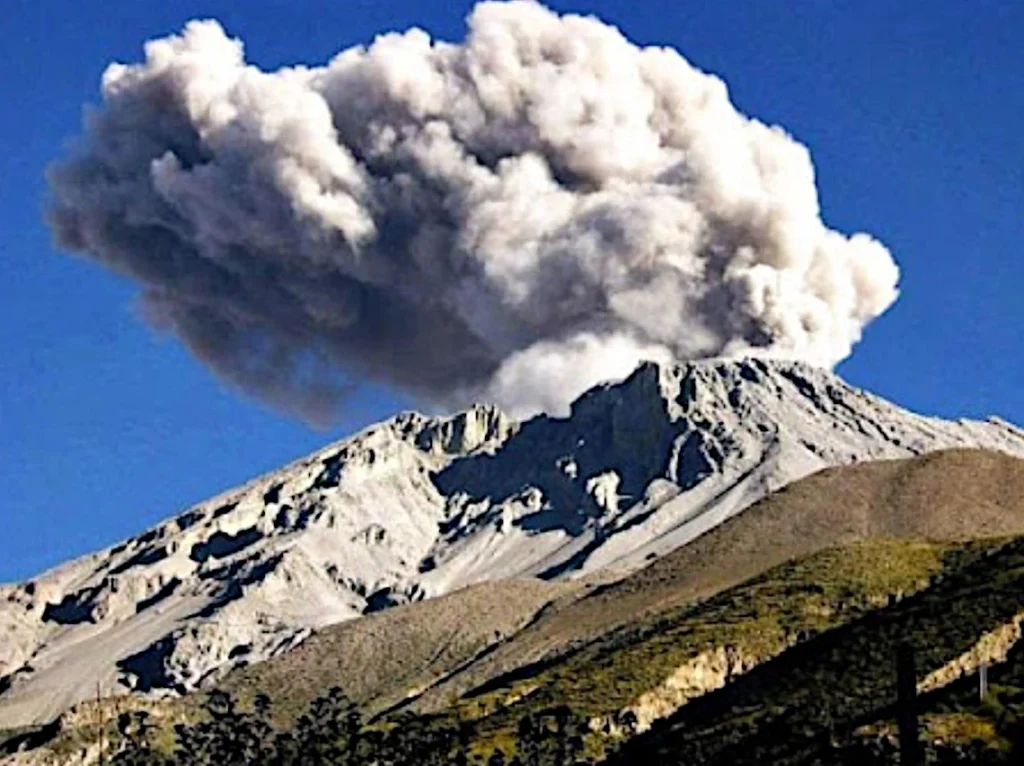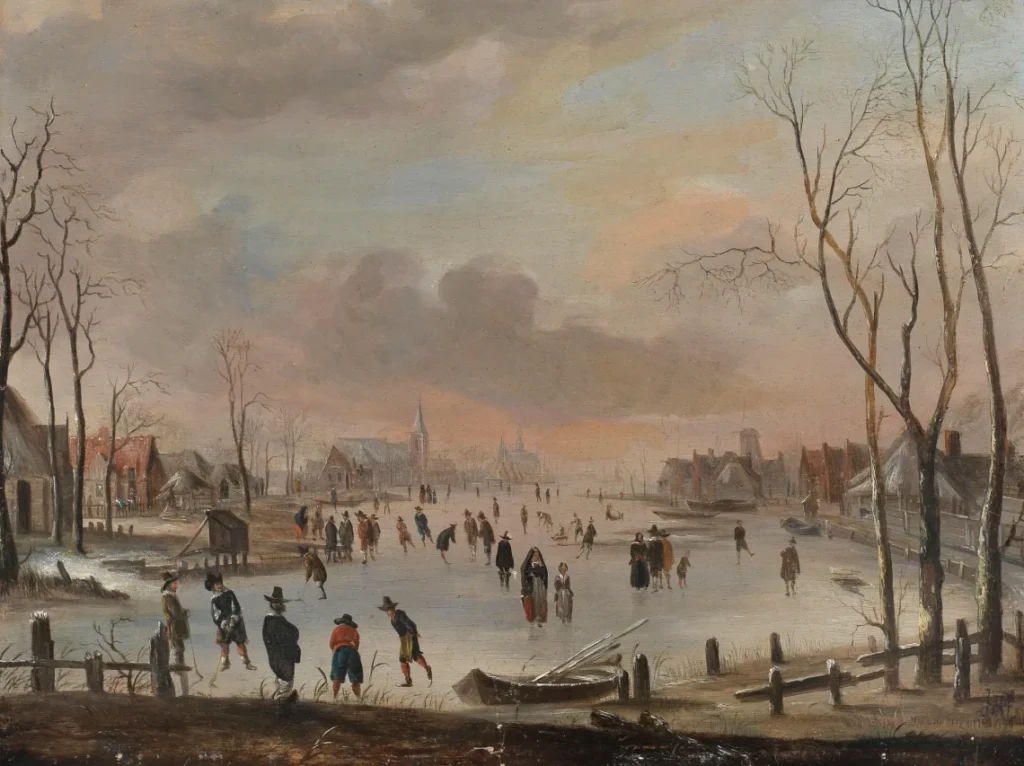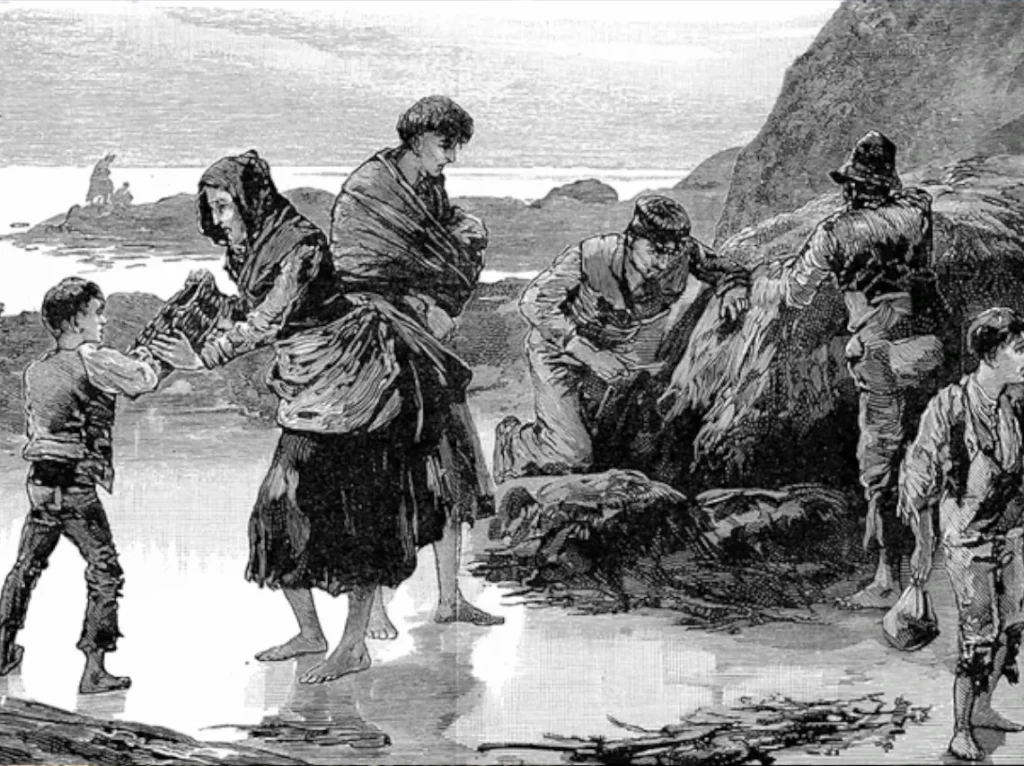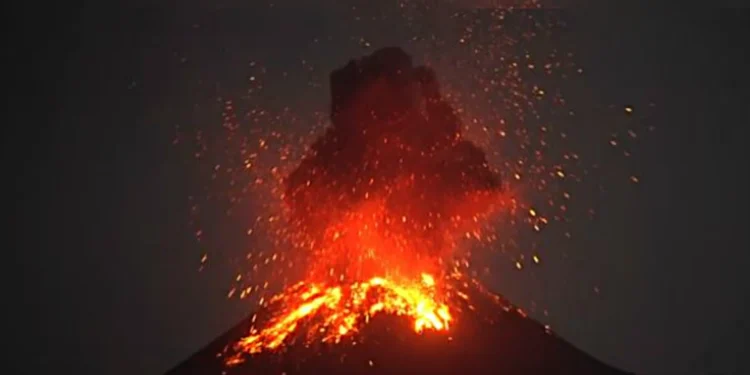Deep in the south of Peru, a dormant giant awakened with fury on February 19, 1600. Huaynaputina, a little-known volcano until then, erupted in one of the most devastating explosions in history. Its destructive power not only wiped out valleys and towns in the Andes but also set off a chain of events that would alter the fate of the entire world.
The ashes launched into the sky darkened the atmosphere, causing global cooling that led to frost, failed harvests, and widespread hunger across continents. One of the hardest-hit places was Russia, where food shortages led to the worst famine in its history, claiming the lives of approximately two million people.
When Peru Made the World Tremble
Located in the Moquegua region, Huaynaputina erupted with unmatched force, spewing more than 30 km³ of ash and volcanic material into the atmosphere. The explosion was so violent that it left a crater 2.5 km in diameter, burying entire villages under tons of pumice and volcanic ash. The immediate effects were disastrous: overflowing rivers, destroyed crops, and thousands of displaced people. However, the true impact of the eruption was just beginning.
Winds carried the volcanic ash across the planet, blocking sunlight and causing a global temperature drop. Climate cycles and seasons were disrupted, and agricultural production suffered devastating consequences. Not only did Peru suffer; the eruption’s impact was felt as far away as China and Russia. In the Netherlands, the unusual climatic activity caused by Huaynaputina also left an indelible mark.

Huaynaputina’s Echo in the Netherlands
In 1601, the Dutch experienced an abnormally cold climate, with chilly summers and relentless rains that ruined crops. In a country heavily reliant on trade and agriculture, the reduction in food production triggered an economic crisis that affected both merchants and the general population.
Amsterdam’s canals froze more than usual, rivers remained covered in ice, and storms battered the coasts with alarming frequency. Chronicles from the time document these extreme weather patterns, linking them directly to Huaynaputina’s eruption and demonstrating how an event in one corner of the world can have repercussions thousands of kilometers away.

The Great Russian Famine (1601-1603): A Devastating Side Effect
While the altered climate caused difficulties in the Netherlands, in Russia, the situation was apocalyptic. For two and a half years, winter was relentless, and summer brought no relief. The lack of sunlight and constant rains destroyed entire crops. The famine spread rapidly, and in Moscow alone, approximately 127,000 bodies were buried in mass graves.
It is estimated that around two million people perished from starvation across Russia, a figure that drastically altered the country’s demographics and changed its political course. Hunger and desperation fueled social chaos, weakening the Tsarist government and setting the stage for future wars and internal conflicts.

The Power of Nature and the Need to Be Prepared
Huaynaputina teaches us a crucial lesson: nature is unpredictable, and its effects can be felt in unexpected places. Today, with climate change and increasing volcanic activity worldwide, the need to monitor and preserve our ecosystem is more urgent than ever.
Peru, a country with over 400 volcanoes, remains a vulnerable territory. Learning from history and respecting nature is key to preventing tragedies like Huaynaputina’s from recurring with even more catastrophic consequences. As a researcher from the University of Amsterdam notes: “The impact of extreme natural events transcends borders, reminding us that we live in an interconnected world.”
Huaynaputina is not just part of Peru’s history but of global history. Its eruption proves that our planet is alive and that we must respect it. Environmental conservation and disaster preparedness are not only the responsibility of governments but of all of us.
Now, we invite you to reflect: Did you know that a Peruvian volcano could change the course of European history? How do you think we can be better prepared for future natural disasters?
Leave your opinion in the comments, share this article with friends and family, and follow us to continue discovering fascinating stories about Peru’s impact on the world. Your participation is key to helping us create valuable content!



